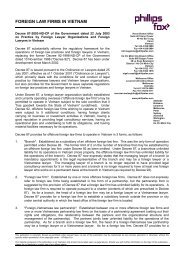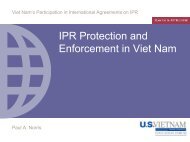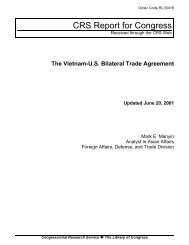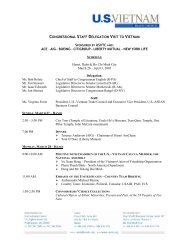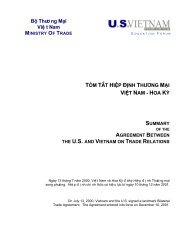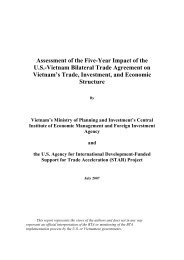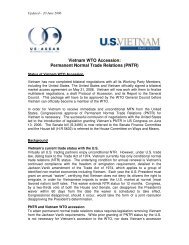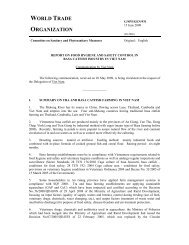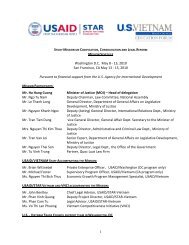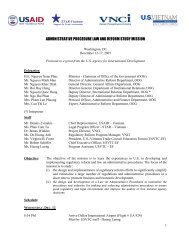Climate risks and adaptation in Asian coastal megacities: A synthesis
Climate risks and adaptation in Asian coastal megacities: A synthesis
Climate risks and adaptation in Asian coastal megacities: A synthesis
- No tags were found...
Create successful ePaper yourself
Turn your PDF publications into a flip-book with our unique Google optimized e-Paper software.
Why these three cities? The three develop<strong>in</strong>gcountry cities selected for this study are all <strong>coastal</strong><strong>megacities</strong> with populations (official <strong>and</strong> unofficial)rang<strong>in</strong>g from 8 to 15 million people. Two are capitalcities <strong>and</strong> all three are centers of national <strong>and</strong> regionaleconomic growth contribut<strong>in</strong>g substantially to theGDP of the respective countries. However, be<strong>in</strong>g lowly<strong>in</strong>g<strong>coastal</strong> cities situated <strong>in</strong> the deltas of major riversystems <strong>in</strong> the East Asia region, all three are highlyvulnerable to climate-related <strong>risks</strong> <strong>and</strong> rank high <strong>in</strong>recent rank<strong>in</strong>gs of exposure <strong>and</strong> vulnerability. HoChi M<strong>in</strong>h City <strong>and</strong> Bangkok are among the top 10cities <strong>in</strong> terms of population likely to be exposed to<strong>coastal</strong> flood<strong>in</strong>g due to climate-related <strong>risks</strong> <strong>in</strong> 2070,accord<strong>in</strong>g to the first global assessment of port cities(Nicholls et al. 2008). Further, Manila has been identifiedas particularly vulnerable to typhoon damage,<strong>and</strong> HCMC ranks fifth by population exposed tothe effects of climate change (Nicholls et al. 2008). Arecent study also identifies Manila, Ho Chi M<strong>in</strong>h City,<strong>and</strong> Bangkok among the top eleven <strong>Asian</strong> <strong>megacities</strong>that are most vulnerable to climate change (Yusuf<strong>and</strong> Francisco 2009). 2 Devastat<strong>in</strong>g floods <strong>in</strong> Manila<strong>in</strong> 2009 only confirm the vulnerability of this city toextreme weather events. For <strong>in</strong>stance, flood<strong>in</strong>g <strong>in</strong>Manila from tropical storm Ketsana <strong>in</strong> Septemberwas the heaviest <strong>in</strong> almost 40 years, with flood watersreach<strong>in</strong>g nearly 7 meters. More than 80 percent ofthe city was underwater, caus<strong>in</strong>g immense damageto hous<strong>in</strong>g <strong>and</strong> <strong>in</strong>frastructure <strong>and</strong> displac<strong>in</strong>g around280,000–300,000 people. 3 All of this highlights theneed to better underst<strong>and</strong> <strong>and</strong> prepare for such climate<strong>risks</strong> <strong>and</strong> <strong>in</strong>corporate appropriate <strong>adaptation</strong>measures <strong>in</strong>to urban plann<strong>in</strong>g.While there is a grow<strong>in</strong>g literature on cities <strong>and</strong>climate change, as yet there is limited research onsystematically assess<strong>in</strong>g climate-related <strong>risks</strong> at thecity level. This report aims to fill this gap. Further,it aims to provide evidence-based <strong>in</strong>formation tosupport urban policy <strong>and</strong> plann<strong>in</strong>g as these issuesare debated at the local, national, <strong>and</strong> global levels.ObjectiveThe ma<strong>in</strong> objective of this report is to strengthenour underst<strong>and</strong><strong>in</strong>g of climate-related <strong>risks</strong> <strong>and</strong> impacts<strong>in</strong> <strong>coastal</strong> <strong>megacities</strong> <strong>in</strong> develop<strong>in</strong>g countriesus<strong>in</strong>g case studies of three cities that are different<strong>in</strong> their climate, hydrological, <strong>and</strong> socioeconomiccharacteristics. Specifically, it draws on an <strong>in</strong>-depthanalysis of climate <strong>risks</strong> <strong>and</strong> impacts <strong>in</strong> Bangkok,Manila, <strong>and</strong> Ho Chi M<strong>in</strong>h City to highlight to national<strong>and</strong> municipal decision makers (a) the scaleof climate-related impacts <strong>and</strong> vulnerabilities atthe city level, (b) estimates of associated damagecosts, <strong>and</strong> (c) potential <strong>adaptation</strong> options. Whilethe report focuses on three cities <strong>in</strong> East Asia, thepolicy implications result<strong>in</strong>g from the comparativeanalysis of these cities has broader relevance forassess<strong>in</strong>g climate <strong>risks</strong> <strong>and</strong> identify<strong>in</strong>g <strong>adaptation</strong>options <strong>in</strong> other <strong>coastal</strong> areas.Approach <strong>and</strong> MethodologyThe approach to assess<strong>in</strong>g climate <strong>risks</strong> <strong>and</strong> impactsconsists of the follow<strong>in</strong>g sequential steps: (1)determ<strong>in</strong><strong>in</strong>g climate variables at the level of thecity/watershed through downscal<strong>in</strong>g techniques;(2) estimat<strong>in</strong>g impacts <strong>and</strong> vulnerability throughhydrometeorological model<strong>in</strong>g, scenario analysis,<strong>and</strong> GIS mapp<strong>in</strong>g; <strong>and</strong> (3) prepar<strong>in</strong>g a damage/loss assessment <strong>and</strong> identification/prioritizationof <strong>adaptation</strong> options.As a first step, each of the city-level studiesconsidered two IPCC scenarios, a high- <strong>and</strong> a lowemissionsscenario, 4 <strong>and</strong> estimated climate <strong>risks</strong>to 2050. The 2050 time horizon for the study is appropriategiven city-level plann<strong>in</strong>g horizons <strong>and</strong>the typical time frame for major flood protectionmeasures. The downscal<strong>in</strong>g analysis allowed estimationof changes <strong>in</strong> temperature <strong>and</strong> precipitation<strong>in</strong> 2050. These parameters were used as <strong>in</strong>puts to thehydrological model<strong>in</strong>g. In addition to this, assumptions<strong>and</strong> estimates were also made about changes<strong>in</strong> sea level rise <strong>and</strong> storm surge <strong>in</strong> 2050 based onpast historical data <strong>and</strong> available estimates.2Vulnerability <strong>in</strong> the scorecard was understood <strong>in</strong>terms of exposure, sensitivity, <strong>and</strong> adaptive capacity ofthe cities. See also http://www.idrc.ca/uploads/user-S/12324196651Mapp<strong>in</strong>g_Report.pdf.3http://edition.cnn.com/2009/WORLD/asiapcf/09/27/philipp<strong>in</strong>es.floods/<strong>in</strong>dex.html.4Different scenarios were considered to assess impact dueto the uncerta<strong>in</strong>ties <strong>in</strong> project<strong>in</strong>g future climate conditions.xii | <strong>Climate</strong> Risks <strong>and</strong> Adaptation <strong>in</strong> <strong>Asian</strong> Coastal Megacities: A Synthesis Report



